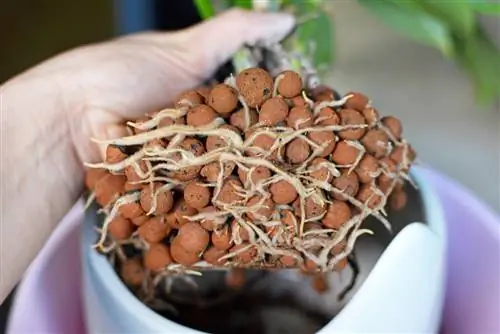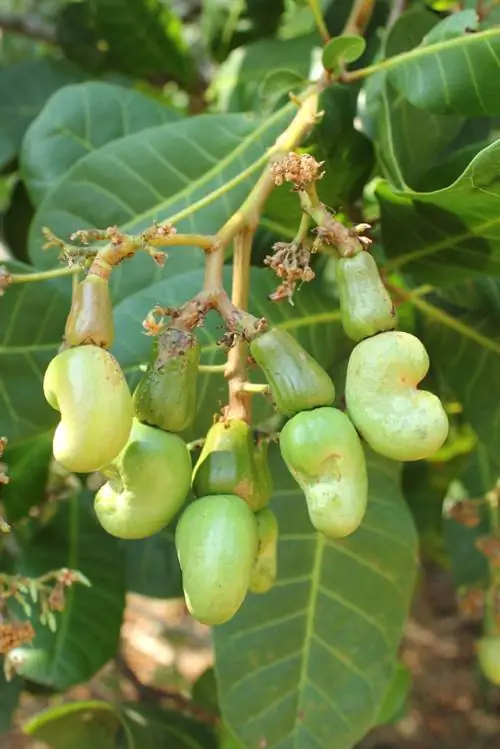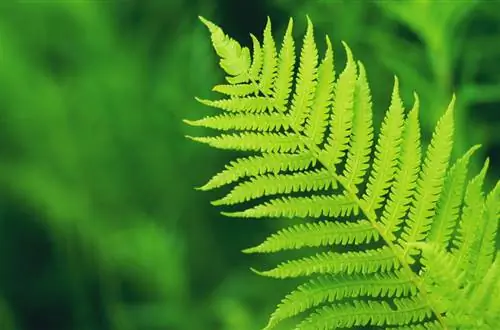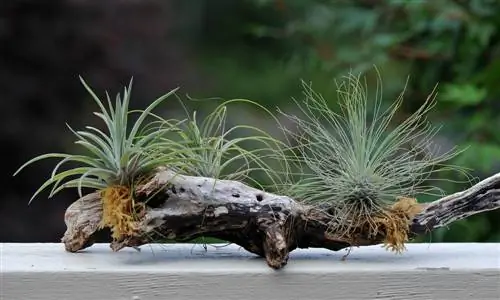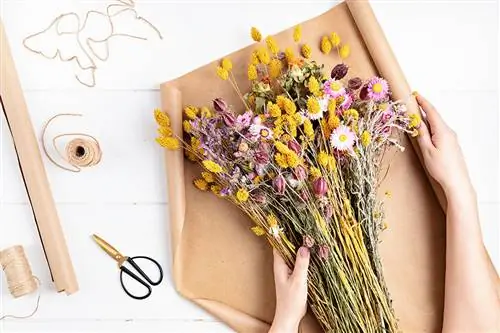- Author admin [email protected].
- Public 2024-01-05 20:48.
- Last modified 2025-01-23 11:22.
Houseplants that grow without soil not only look impressive, but also save a lot of work. For example, hydroponics, an alternative to traditional container farming, reduces pests from nesting in the substrate. You can find out numerous other advantages of the slightly different cultivation in this article.
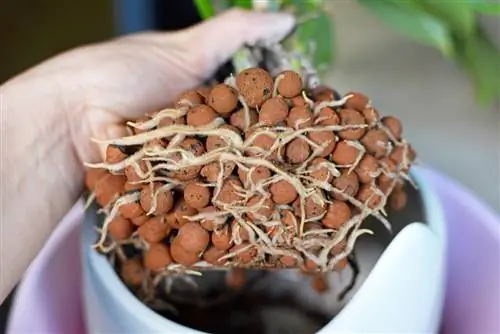
How do you grow houseplants without soil?
Houseplants can thrive without soil in hydroponics, in which water- and nutrient-rich granules replace the traditional substrate. An inner pot with side slots, a water level indicator, a water-permeable planter, expanded clay granules and suitable fertilizer are important.
Hydroculture
Hydroponics describes keeping plants without any substrate. The houseplants grow in a water biotope. Nutrient-rich granules replace the soil without causing any disadvantages to the supply. In any case, it is difficult to exactly copy the natural habitat of the plants in a small container. Most of the time, a lot of additional fertilizer is required to allow the houseplant to grow he althily. Thrive in water right from the start, but they develop the necessary properties straight away.
Users needed
- special inner pot with side slots
- Water level indicator
- water-permeable planter
- Expanded clay granules
- suitable fertilizer
Suitable plants
Basically, you can cultivate any plant you want without any substrate. However, it should be a home-grown specimen that was not previously used to potting soil. On the one hand, you would have to remove all of the soil from the root ball before “planting”. On the other hand, switching from substrate to water means stress for the houseplants. Instead, new offshoots form water roots right from the start and adapt to the habitat.
Advantages
Hydroponics has numerous advantages. The most important include simplified care and hygienic conditions. While conventional substrate on the windowsill dries out quickly, you only need to water houseplants without soil every two to four weeks, depending on the variety. They are also spared the hassle of digging out the root ball when repotting. Houseplants without soil are often found in hospitals or other facilities where great attention is paid to sterility. Pests like to nest in the plant substrate. Hydroponics, on the other hand, does not offer the pests any habitat. People with allergies also benefit from keeping plants without a substrate. In addition, no plant soil crumbles onto the windowsill or floor.
Care
Even if hydroponics is not particularly maintenance-intensive, you still need to pay attention to the correct water level. To do this, install a water level gauge to control humidity. You should only water the plant again when it has been at its lowest level for a day or two. Otherwise you risk suffocating the root ball. This is reflected in brown shoot tips.

